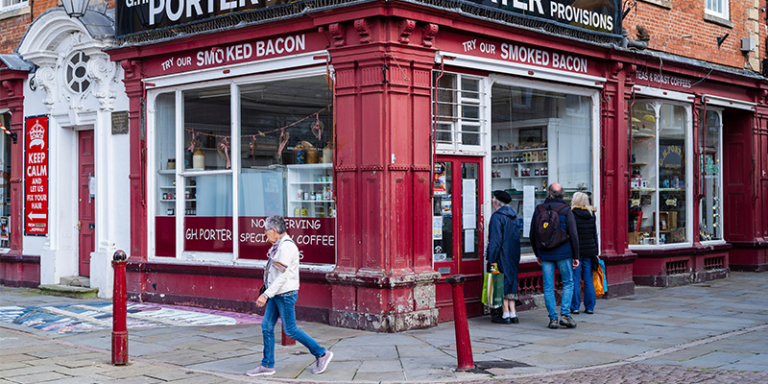Reimagining our high streets
2 October 2023
Ahead of a special Citizen Portrait series featuring the people and places that make up the heart of our communities, Josh Westerling from Power to Change explores how we might reimagine our high streets for a new age.

Josh Westerling, Policy Manager, Power to Change
The death of the high street has been declared prematurely, but its decline is strange nonetheless. We all care about our local high street, whether that’s in the town where we grew up or the place where we have made a new home. But it is also true that between juggling busy lives, unstable jobs, and childcare, supporting those businesses that keep the high street thriving might not always be front of mind. Yet the high street endures because it is grounded in our sense of community, of a place where people come together, where you get a friendly nod from the person making your coffee or a hello from your neighbour a few doors down.
The high street won’t survive if it relies on a retail-dominated model. We know that it is easier to get the clothes that you want online. What we want is a high street based on experience, one that makes us feel alive. We want to see familiar faces and meet others we might not know yet in ‘destination spaces’ like cafes. We want the serendipity of browsing and window shopping – setting out for one thing and coming back with another. Retail can’t dominate the high street, but people still want a shopping experience they can only get on the high street.
It reveals a contradiction in the public. People do value the benefits of a globalised economy, but they also yearn for one that is more local – in what we at Power to Change have dubbed the Age of Localisation, where people desire a politics and economy that is less distant from their lives. Bringing the high street into the 21st century could serve as a starting point for a new political economy that appreciates and values the local. If the retail-dominated model of the high street won’t suffice, we need something new to take its place; we need a community-powered high street, where the local community has more of a say over the direction that it takes and has control over the spaces that are there.
Walk down your local high street, and there will be too many shuttered up shops that feed a sense of decline. Yet we know that high streets with more community-owned spaces have lower rates of vacancy. We also know that community-owned spaces keep more money in the local economy – 56p of every pound compared to just 40p for large private sector firms – and that they act as ‘destination spaces’ driving footfall to other businesses.
The community-powered high street is a quiet revolution happening under the radar of policymakers who tend to focus on how to rebuild an outdated model for the high street. The community businesses who Power to Change work with are leading this quiet revolution, but too often this is against the grain. Hastings Commons, for example, are bringing to life 12 buildings and spaces, including iconic local landmarks like the Observer Building, to host workspaces, rent-capped homes, and event spaces in Hastings town centre. But to do so they have had to source nearly 100 separate grants, local and social investment awards. That can’t be right.
In some places, forward-thinking local councils are working against the grain, acting as an ‘unblocker’ for community organisations in a system that is otherwise stuck. Like in Birkenhead, where Wirral Borough Council is showing the role a council can play in the community-powered revival of town centres. The council recognises the value of community organisations and helps them access space by drawing on their networks of local asset owners and investors. This helped Future Yard – a community music venue in Birkenhead – create an additional 6,800 sq. ft of music skills and project spaces in their existing building. Key to this is changing hearts and minds in the council – you need the whole council to recognise the potential of community organisations so that the power of being an ‘unblocker’ is bought into and implemented.
What is needed, then, so that the community-powered high street is no longer realised against the grain, but with it? Ultimately, we need to create the conditions for community businesses to thrive as part of a new political economy that appreciates and values the local. This means being provided the powers, resources, and backing that they need to realise their full potential. Powers like a community right to buy assets of community value and long-term vacant high street property. Resources like a High Street Investment Vehicle to leverage private investment and purchase strategically important high street assets and transfer them into community ownership over time. Backing through a business rates relief for Community Interest Companies and Community Benefit Societies funded through closing the ‘box-shifting’ loophole that sees £250 million in business rates lost each year.
The community-powered high street can be the testing ground for a new political economy that appreciates and values the local. The quiet revolution that is underway in places like Hastings should be learned from. Where barriers to progress exist, they should be removed, and community businesses should be given the powers, resources, and backing they need to thrive. We have entered the Age of Localization, and it is time that our economy does too, with the high street leading the way.
Sign up HERE to the Policy Lab newsletter to receive the latest news and events.
 Close
Close

